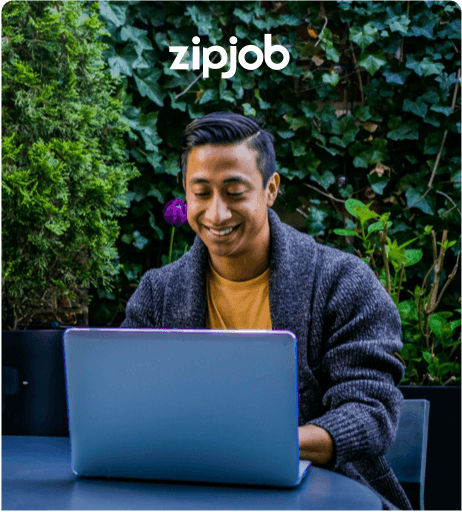The Complete Guide to Including Social Media on Your Resume (+ Examples)

Does a potential employer really need to see your TikTok dances?
Over 70% of hiring managers see social media as a vital part of the screening process. But should you include your social media on your resume? The answer is not as clear-cut as you might imagine. When making this decision, there are a selection of factors you need to consider.
In the following guide, we will take you through the ins and outs of this issue. Plus, we’ve got two examples to show you how to include social media on a resume.
When to include social media on your resume
First things first, let’s talk about when you should include social media on your resume. If you’re trying to determine whether this is the right move for you, you’ve come to the right place. Let’s take a look at some of the main instances when including these links will be beneficial.
1. You have a strong online presence
Having followers on social media gives you clout. If you have built a strong following on a platform and you want to shout about it, now may be the time to do so. Make sure the channel content aligns with the job for which you are going.
For example, if you are going for a job in travel and have an Instagram dedicated to vacations, that may be relevant. Should you have an X account where you give expert money advice, that may be suitable when applying for a job in finance. You need to think about these issues when you’re deciding whether it’s a smart idea to include social media on your resume.
2. Your social media is your portfolio
Do you work in a creative field where hiring managers expect to see your portfolio? If so, you may use your social media channels as a portfolio. For example, actors could share their shorts on TikTok while writers may share their articles on LinkedIn. When you use a social media platform in this way, it makes perfect sense to include it on your professional resume.
3. You’re applying for a social media role
If you are applying for a job as a social media strategist or a social media coordinator, it may be logical to include social links on your resume. Of course, you should only do so if you have a strong presence. Keep in mind that your accounts will be an example of your work. You need to make sure they are suitable for work and showcase your unique talents in this area.
4. You want to show off your network
Who you know matters. When you’re searching for a new job, networking is essential. For example, if you work in sales, marketing, or PR, having a robust set of connections could make all the difference. In this case, you might find that it’s smart to put your social media on your resume. Should you have a large network on a platform, it makes sense to highlight this as part of your application.
5. You want to position yourself as an expert
On LinkedIn, you can publish your own articles and add to existing content as an expert. These articles work much the same way that blogs do. If you are taking advantage of these features, putting your LinkedIn on your resume is the way to go.
When the hiring manager looks at your profile, they will instantly be able to see the content you have created. You might find this approach helps strengthen your application and sets you apart from the crowd.
When not to include social media on your resume
You shouldn’t always include social media on your resume. In some instances, you might find adding these links to the document does more harm than good. If your social accounts are highly personal, there is no reason you should share them with a hiring manager. Similarly, if the channels don’t add anything to your application, you shouldn’t include them.
Before you start hyperlinking your accounts, consider why you are doing so. If there is no real reason to add social media to your resume, don’t bother. Put simply, linking to a Facebook account where you share memes and jokes won’t help you land your next interview.
Expert Tip
Always ask yourself why
Before you include anything on your resume, ask yourself why you are bothering. Each piece of content should add value to your application. Avoid including irrelevant information, and consider what each item tells the hiring manager about you as a professional.
Looking for some more writing inspiration? You’ve come to the right place. Read more about how to make a professional resume in our complete guide now.
Which social media links to put your resume
Let’s talk about which social media links you might include (and when you should include them!). Different platforms suit different professions and circumstances. If you are still struggling to decide whether you need social media on your resume, take a look at the below:
Instagram. If you have a strong personal brand on Instagram and it aligns with your career, you might want to include it on your resume. Adding this account may be suitable if you work in a creative field – such as photography or content creation – and your account supports that. Of course, if you do choose to include it, make sure it’s public.
TikTok. Believe it or not, an increasing number of professionals are using TikTok for their business. Only include this account if it aligns with your job. For example, if you make videos about your industry, it may be worth sharing the link. (Note: The hiring manager doesn’t need to see your dancing… unless you are applying for a dance role!)
LinkedIn. This social network is geared toward professionals, so it’s likely that you will want to include it on your resume. Needless to say, you should make sure your LinkedIn profile is up to date and that you are active on the account. You may find the hiring manager wants to connect with you on this platform during the hiring process.
YouTube. Do you have a YouTube channel? If you do, including it on your resume could help strengthen your application. Once again, you need to make sure the subject matter of this channel works for your career. If you create DIY stunt videos, for instance, that is unlikely to help you land a job as a career advisor.
Facebook. Most of the time, there is no reason to include your Facebook account on your resume. However, if you have a public profile on which you share career-related posts, you can add a link to it. As a general rule, though, you should avoid this one.
Think about the story you are weaving for the hiring manager. Every part needs to be on brand. When you are thinking about which to include, ensure they suit your professional persona.
How to include social media on your resume (with examples)
Don’t just whack the links anywhere on your document. You need to be strategic. There are two main places you can include social media on your resume: your contact section or a dedicated ‘Social media’ section. Let’s take a quick look at how you can lay out each of these sections.
Including social media in your contact information
The first pieces of information on your resume features your name and basic contact details. If you are only including one or two social media links, you can put them in this section. You can either write the name of the account – e.g. LinkedIn profile – and hyperlink to it or add your social media handle. Here’s an example of how you can structure this section of your resume:
Your First and Last Name
Your Address, Your City, Your State – Your Phone Number – Your Email Address
LinkedIn: @ [Your LinkedIn Handle] – Twitter: @ [Your Twitter Handle]
When using this structure, make sure it fits neatly into just a few lines at the top. You don’t want this section of your resume to take up too much space. Including clickable links is a simple way to make your application more interactive.
Including social media as a whole section
Should you work in social media or want to share a large number of accounts, you can create a bespoke section for these links. Position the section right at the bottom of your document. Ensure that it doesn’t take up too much space. Here’s how it should look.
Social media accounts
LinkedIn: @ [Your LinkedIn Handle]
Twitter: @ [Your Twitter Handle]
Instagram: @ [Your Instagram Handle]
TikTok: @ [Your TikTok Handle]
Be sure you hyperlink the accounts so they’re clickable. Highlight the word you want to link to, right-click on the computer, and then paste the appropriate link. This is a quick and easy way to get the job done.
Tips to keep your social media suitable for work
Now that we have covered how to include social media on your resume, it’s time for some additional work. You need to make sure your online presence does not hinder your chances of landing your dream job – since the majority of recruiters will take a peek at your accounts before hiring you. Follow our tips to boost your chances of success.
Google your full name
If you’ve never Googled yourself before now, this is your sign to do so. You may not know what information is out there for hiring managers to find. Whether it’s a Tumblr account from 10 years ago or some embarrassing videos, you need to be aware of it. Check out what comes up when you Google your name and, where possible, purge anything that is unprofessional.
Keep private things private
Do you share everything about your personal life online? If you are an over-sharer, you might want to make sure your accounts are set to private. For example, if you happen to have an Instagram where you share pictures of your family and nights out, that may not be suitable for work. You can get around this problem by making the account private for followers only.
Tell a consistent story
When you’re including a range of social media on your resume, there’s one thing you need to check – that is whether it is all telling the same story. Make sure your Instagram and LinkedIn accounts align with each other. If you want to take things to a new level, you may consider using specific terminology or color tones to create your professional brand.
Keep things up to date
If you do decide to share social media accounts on your resume, here’s the golden rule. They have to be both professional and up-to-date. Make sure you regularly check your profiles and update them with new information. An account that you haven’t used in years is hardly going to impress the hiring manager. Make a habit out of this one.
Next-level resume
Including social media on your resume is a speedy way to take it to the next level. However, you need to ensure the links you share are relevant and add value to your application. Use this guide to help you decide when it is appropriate to share certain platforms. You can also check out the examples we have given if you need inspiration. Get started now!
Looking for some more inspiration when it comes to your resume? We’ve got you covered. Ensure your application is on point with our free resume review tool. Learn how to boost your applications, land more interviews, and potentially get hired faster.

